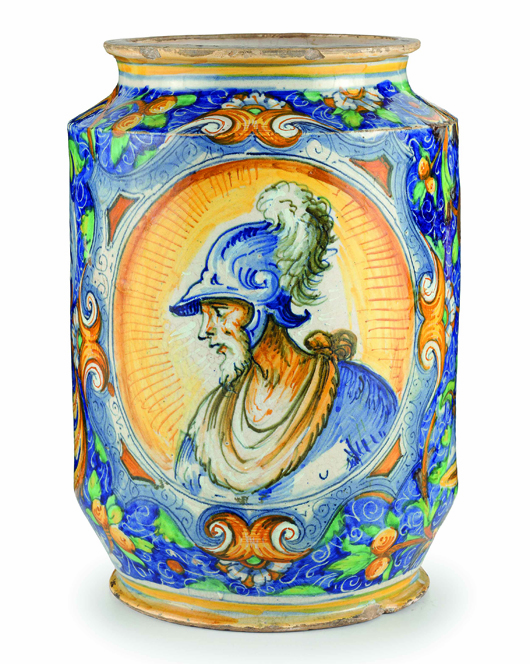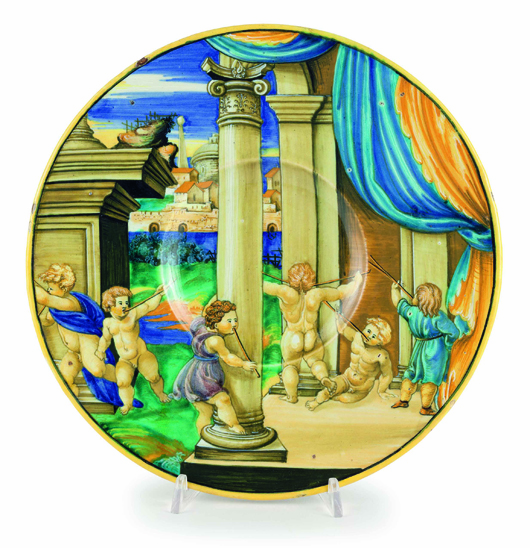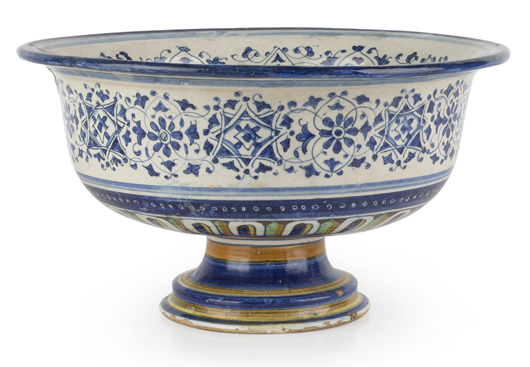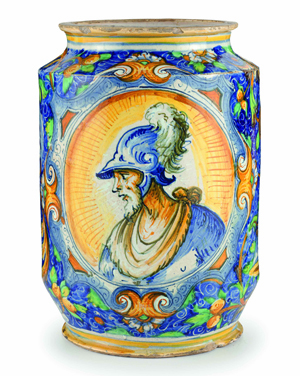
GENOA, Italy – Two years after its success in October 2011, Renaissance majolica is back at Wannenes. On Nov. 19, the Genoan auction house will present a sale exclusively dedicated to the Italian Renaissance majolica with 100 lots ranging from about €4,000-€5,000 to €150,000-€180,000.
Two years ago an auction dedicated to the same segment achieved a surprising result: €1,247,466. A pair of vases had realized the incredible price of €440,000. Therefore, great interest is expected in this special market that does not follow the regular course of porcelain and ceramics, but represents a separate segment.
“Collecting Renaissance majolica,” said the expert Luca Melegati, “is related to the collecting of antique paintings and important works, and this is a connection that was born already with the great collections of the second half of the 19th century, which were later donated to the museums.”
He continued: “The reason is that in the 16th century majolica derived from the great commissions and therefore objects of great value with important physical and elevated formal balance were produced. The importance of the commissioner was reflected in the quality of the object. Also, like for print and etchings, majolica was used as a means of divulgation of the great paintings of the period. Majolica’s luck in the Renaissance was equal to that of ceramic in the 18th century, and the elitist essence of this production has remained intact to this day.”
Even in times of economic crisis, while many segments of the decorative arts are suffering and are struggling to find a place, Renaissance majolica shows a reverse trend and maintains a strong market. For that auction houses are committed to providing events dedicated to this sector.
“The most important market places for Renaissance majolica are traditionally Britain and Italy,” Melegati said, “but it is a market without borders, with collectors throughout Europe, recently especially in Germany, and also in the United States. International specialists are John Mallet and Timothy Wilson in the UK, Johanna Lessmann in Germany, and Carmen Ravanelli Guidotti in Italy.”
Wannenes auction is also important because it is a collection of unique provenance, from Italy, collected over the past 25 years or so. Philological studies have been made to ensure the attributions. It includes examples of high quality from all the major schools, including Urbino, Faenza, Venice, Montelupo (near Florence) and Deruta (near Perugia), although it is difficult to prioritize among the variety of Italian schools of the time.
Among the leading lots a large cup produced in Montelupo, probably from the Florentine Davanzati collection, bearing a coat of arms which is likely attributable to the well-known family of Salvetti of Florence (lot 28, est. €24,000 to €26,000). A big trefoil jug decorated with the scene of Leda and the Swan in 1545 is estimated at €22,000 to €26,000 (lot 44).
To represent the Venetian production there is a great vase with sophisticated form of late 16th or early 17th century (lot 90, est. €9,000 to €12,000). A plate from the workshop of Fontana from Urbino and decorated with Argo and Mercury, circa 1540, is offered at €12,000 to €14,000 (lot 19), while a plate belonging to the famous service Salviati carries an estimate of €8,000 to €12,000 (lot 20).
The day before Wannenes will hold another auction that includes china and ceramics. Among the 70 lots offered are some special majolica from the Castelli’s production of the 17th and 18th centuries in Abruzzo. This manufacture is special because it is the only one in Italy to continue in the 17th and 18th century the Renaissance tradition of the “istoriato.” Put together in the 1960s, the collection has estimates at around €10,000 to €12,000.
In the same days there will also be other sales of decorative arts, with auctions of silver, glass, icons, Russian art, jewelry and watches.
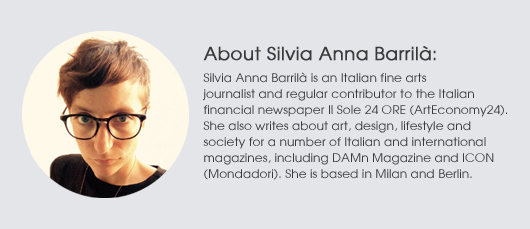
ADDITIONAL IMAGE OF NOTE
